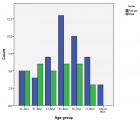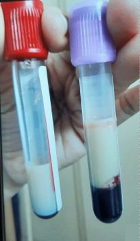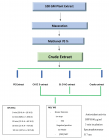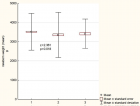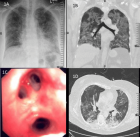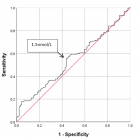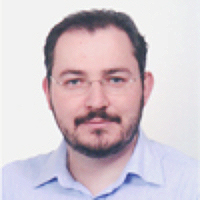Abstract
Case Report
Chase out or unfortunate coping strategy? Analysis of urban settlement of the homeless addicts at public parks
Aikins Amoako Asiama*, Ka Wang Kelvin Lam and Hua Zhong
Published: 08 September, 2021 | Volume 5 - Issue 1 | Pages: 020-026
Extant studies have labelled persons-with-addiction and the homeless as ‘invaders’ of public parks, aggressive/violent with psychiatric and medical disorders, a burden to the society, and transmitters of most deadly airborne or chronic diseases. Literature subtly discuses that such people must be chased out of the public. Yet, such studies have not concurrently analyzed from the viewpoint of urban parks users, the persons-with-addiction and the homeless people what needs to be done to improve the situation. Therefore, the study aims to explore whether problematic communities and subcultural factors make the disadvantaged resort to negative copping strategies when their legal means are blocked: how the other park users respond to the homeless drug addicts’ hardship: and the possible suggestions from all the park users. This is done with reference to social disorganization and Sub-culture theory, and through ethnographic research approach (8 months field observation) and in-depth-interviews with 27 participants. Our study found that persons-with-addiction and the homeless are not always aggressive/violent/harmful as they have been labelled. But only disadvantaged individuals who desire to emulate the ideals and ambitions of the middle class but lack resources to achieve such success. Being overwhelmed with such frustrations from their dilemmas, they consider themselves ‘double-failures’ and retreat into drug addiction and find abode in the public spaces. We therefore conclude that persons with addiction and the homeless people are not always violent and criminal persons who are to be chased out of public parks. But only disadvantaged individuals who need help for choosing a negative coping strategy.
Read Full Article HTML DOI: 10.29328/journal.jatr.1001018 Cite this Article Read Full Article PDF
Keywords:
Disadvantaged persons; Homeless people; Persons with addiction; Public parks; Residents; Urban
References
- Bah YM. Drug abuse among street children. Biomed J. 2019;1: 19.
- Blackman S. Subculture theory: An historical and contemporary assessment of the concept for understanding deviance. Deviant behavior. 2014;35: 496-512.
- Brady M. On- and off-premise drinking choices among Indigenous Australians: The influence of socio-spatial factors. Drug Alcohol Rev. 2010; 29: 446–451. PubMed: https://pubmed.ncbi.nlm.nih.gov/20636662/
- Brown L. An ethnographic study of the friendship patterns of international students in England: An attempt to recreate home through conational interaction. Int J Educatio Res. 2009;48: 184-193.
- Bursik Jr, RJ. Social disorganization and theories of crime and delinquency: Problems and prospects. 1988;26: 519-552.
- Cloward R, Ohlin E. Delinquency and Opportunity. New York: Free Press. 1960.
- Cohen A. Delinquent Boys – The Subculture of the Gang. London: Collier Macmillan. 1956.
- Cohen DA, McKenzie TL, Sehgal A, Williamson S, Golinelli D, et al. Contribution of public parks to physical activity. Am J Public Health. 2008;97: 509-514. PubMed: https://pubmed.ncbi.nlm.nih.gov/17267728/
- Collins AB, Boyd J, Mayer S, Fowler A, Kennedy MC, et al. Policing space in the overdose crisis: A rapid ethnographic study of the impact of law enforcement practices on the effectiveness of overdose prevention sites. Int J Drug Policy. 2019;73: 199-207. PubMed: https://pubmed.ncbi.nlm.nih.gov/31542327/
- Daley DC. Family and social aspects of substance use disorders and treatment. J Food Drug Anal. 2013;21: S73-S76. PubMed: https://pubmed.ncbi.nlm.nih.gov/25214748/
- Dovey K, Fitzgerald J, Choi Y. Safety becomes danger: dilemmas of drug-use in public space. Health Place. 2001;7: 319-331. PubMed: https://pubmed.ncbi.nlm.nih.gov/11682331/
- Fareo DO. Drug Abuse among Nigerian Adolescents: Strategies for Counselling. J Int Soc Res. 2012; 5: 1307-9581.
- Fetters MD, Curry LA, Creswell JW. Achieving integration in mixed methods designs—principles and practices. Health Serv Res. 2013; 48: 2134-2156. PubMed: https://pubmed.ncbi.nlm.nih.gov/24279835/
- Galvão AEO, Saavedra L, Cameira M. Economic and sociocultural poverty in drug abuse: from individual to sociopolitical responsibility. Saúde e Sociedade. 2018; 27: 820-833.
- Jermsittiparsert K, Saengchai S, Pattanapongthorn J. Impact of People Access to Public Drugs on Substance Abuse and Delinquency Behavior in Thailand: Mediating Role of Life Satisfaction. Sys Rev Pharm. 2019; 10: 34-43.
- Kavutha MJ, Mwania JM. Influence of drug use on student academic performance among secondary school students in Matinyani district, Kenya. Eur J Education Studies. 2017.
- Lancaster K, Seear K, Ritter A. Reducing stigma and discrimination for people experiencing problematic alcohol and other drug use. Brisbane: Queensland Mental Health Commission. 2017; 118: 1-118.
- Larson LR, Jennings V, Cloutier SA. Public parks and wellbeing in urban areas of the United States. PLoS One. 2016; 11: PubMed: https://pubmed.ncbi.nlm.nih.gov/27054887/
- Loures L, Santos R, Panagopoulos T. Urban parks and sustainable city planning-The case of Portimão, Portugal. Population. 2007; 15: 23.
- Low S, Smith N. (Eds.). The politics of public space. Routledge. 2013.
- Mertens DM. Research and evaluation in education and psychology: Integrating diversity with quantitative, qualitative, and mixed methods. Sage Publications. 2014.
- Ogbu AI, Akintoye EO. Substance Abuse and its influence on Academic Commitments of Undergraduates in selected Universities in Benin City, Edo State. Int J Soc Sci. 2017; 11.
- Okogwu FI. The role of libraries in curbing drug abuse among adolescent boys in Nigeria: A theoretical examination. Int J Develop Manag Rev. 2014; 9: 24-33.
- Olsen H. Open drug scenes and police strategies in Oslo, Norway. J Scandinav Stud Criminol Crime Prevent. 2017; 18: 141-156.
- Page SJ, Hall CM. The geography of tourism and recreation: Environment, place and space. Routledge. 2014.
- Pennay A, Room R. Prohibiting public drinking in urban public spaces: A review of the evidence. Drugs: education, prevention and policy. 2012; 19: 91-101.
- Philip AA, Edna B, Samson AJ. The effects of drug abuse and addiction on academic performance of students in federal polytechnic idah, Kogi State Nigeria. Int J Democratic Develop Stud. 2016; 2: 13-22.
- Pregill P, Volkman N. Landscapes in history: design and planning in the Eastern and Western traditions. John Wiley & Sons. 1999;
- Saunders M, Lewis P, Thornhill A. Research methods for business students (6. utg.). Harlow: Pearson. 2012.
- Saxe L, Kadushin C, Beveridge A, Livert D, Tighe E, et al. The visibility of illicit drugs: implications for community-based drug control strategies. Am J Public Health. 2001; 91: 1987-1994. PubMed: https://www.ncbi.nlm.nih.gov/pmc/articles/PMC1446920/
- Shanahan DF, Lin BB, Bush R, Gaston KJ, Dean JH. Toward improved public health outcomes from urban nature. Am J Public Health. 2015; 105: 470-477. PubMed: https://pubmed.ncbi.nlm.nih.gov/25602866/
- Shaw CR, McKay HD. Juvenile delinquency and urban areas; A study of rates of delinquents in relation to differential characteristics of local communities in American cities. Chicago: University of Chicago Press. 1942.
- Shivers JS, Halper JW. The crisis in urban recreational services. Fairleigh Dickinson University Pres. 1981.
- Tate A. Great City Parks. New York: Spon Press. 2004.
- Taylor I, Walton P, Young J. The new criminology: For a social theory of deviance. Routledge. 2013.
- United Nations Office on Drugs, & Crime. World drug report 2019. United Nations Publications. 2019.
- Valentine G. Social geographies: space and society. Routledge. 2014.
- Westmarland N. The quantitative/qualitative debate and feminist research. In Forum qualitative Sozialforschung= Forum: Qualitative Soc Res. 2004; 2.
- Guo Y, Chang SS, Sha F, Yip PS. Poverty concentration in an affluent city: Geographic variation and correlates of neighborhood poverty rates in Hong Kong. Plos One. 2018; 13: e0190566. PubMed: https://pubmed.ncbi.nlm.nih.gov/29474393/
- Lau M, Pantazis C, Gordon D, Lai L, Sutton E. Poverty in Hong Kong. The China Rev. 2015; 23-58.
- Wissink B, Koh SY, Forrest R. Tycoon city: Political economy, real estate and the super-rich in Hong Kong. In Cities and the super-rich. 2017; 229-252.
- Ho HK. Inside the world of middle-class Hong Kong transnational property investors: ‘5980 miles to my second home’. Int J Housing Policy. 2020; 20: 75-99.
- Young DS, Casey EA. An examination of the sufficiency of small qualitative samples. Social Work Res. 2019; 43: 53-58.
Similar Articles
-
A forensic treatment-monitoring study of an adult with attention-deficit disorder with hyperactivity and substance use disorderNiels Peter Nielsen,Elisabeth H Wiig*. A forensic treatment-monitoring study of an adult with attention-deficit disorder with hyperactivity and substance use disorder. . 2019 doi: 10.29328/journal.jatr.1001009; 3: 001-008
-
Chase out or unfortunate coping strategy? Analysis of urban settlement of the homeless addicts at public parksAikins Amoako Asiama*,Ka Wang Kelvin Lam,Hua Zhong. Chase out or unfortunate coping strategy? Analysis of urban settlement of the homeless addicts at public parks. . 2021 doi: 10.29328/journal.jatr.1001018; 5: 020-026
-
‘Life-Changing Bubbles’ – How carbonated water can relieve swallowing problems for many dysphagia sufferers worldwideJohn Mirams. ‘Life-Changing Bubbles’ – How carbonated water can relieve swallowing problems for many dysphagia sufferers worldwide. . 2023 doi: 10.29328/journal.jatr.1001024; 7: 001-004
Recently Viewed
-
Deciphering the Rosetta Stone - Trans-Mitral Doppler Patterns for a Simplified Study of Left Ventricular Systolic DysfunctionGeorge Thomas*. Deciphering the Rosetta Stone - Trans-Mitral Doppler Patterns for a Simplified Study of Left Ventricular Systolic Dysfunction. Int J Clin Anesth Res. 2023: doi: 10.29328/journal.ijcar.1001023; 7: 008-011
-
Gentian Violet Modulates Cytokines Levels in Mice Spleen toward an Anti-inflammatory ProfileSalam Jbeili, Mohamad Rima, Abdul Rahman Annous, Abdo Ibrahim Berro, Ziad Fajloun, Marc Karam*. Gentian Violet Modulates Cytokines Levels in Mice Spleen toward an Anti-inflammatory Profile. Arch Asthma Allergy Immunol. 2024: doi: 10.29328/journal.aaai.1001034; 8: 001-006
-
Detrimental Effects of Methylenetetrahydrofolate Reductase (MTHFR) Gene Polymorphism on Human Reproductive Health: A ReviewVandana Rai*,Pradeep Kumar. Detrimental Effects of Methylenetetrahydrofolate Reductase (MTHFR) Gene Polymorphism on Human Reproductive Health: A Review. Clin J Obstet Gynecol. 2025: doi: 10.29328/journal.cjog.1001182; 8: 007-014
-
Agro-morphological Growth Response of Acha (Fonio) (Digitaria Exilis and Digitaria Iburua [Kippist] Stapf.) Exposed to Colchicine: Leaf Length, Leaf Width and Leaf Area IndexNyam DD*, Gonzuk NS, Sila MD, Tumba YC, Angyu EA, Kwon-Ndung EH. Agro-morphological Growth Response of Acha (Fonio) (Digitaria Exilis and Digitaria Iburua [Kippist] Stapf.) Exposed to Colchicine: Leaf Length, Leaf Width and Leaf Area Index. J Plant Sci Phytopathol. 2024: doi: 10.29328/journal.jpsp.1001134; 8: 060-064
-
Maximizing the Potential of Ketogenic Dieting as a Potent, Safe, Easy-to-Apply and Cost-Effective Anti-Cancer TherapySimeon Ikechukwu Egba*,Daniel Chigbo. Maximizing the Potential of Ketogenic Dieting as a Potent, Safe, Easy-to-Apply and Cost-Effective Anti-Cancer Therapy. Arch Cancer Sci Ther. 2025: doi: 10.29328/journal.acst.1001047; 9: 001-005
Most Viewed
-
Evaluation of Biostimulants Based on Recovered Protein Hydrolysates from Animal By-products as Plant Growth EnhancersH Pérez-Aguilar*, M Lacruz-Asaro, F Arán-Ais. Evaluation of Biostimulants Based on Recovered Protein Hydrolysates from Animal By-products as Plant Growth Enhancers. J Plant Sci Phytopathol. 2023 doi: 10.29328/journal.jpsp.1001104; 7: 042-047
-
Sinonasal Myxoma Extending into the Orbit in a 4-Year Old: A Case PresentationJulian A Purrinos*, Ramzi Younis. Sinonasal Myxoma Extending into the Orbit in a 4-Year Old: A Case Presentation. Arch Case Rep. 2024 doi: 10.29328/journal.acr.1001099; 8: 075-077
-
Feasibility study of magnetic sensing for detecting single-neuron action potentialsDenis Tonini,Kai Wu,Renata Saha,Jian-Ping Wang*. Feasibility study of magnetic sensing for detecting single-neuron action potentials. Ann Biomed Sci Eng. 2022 doi: 10.29328/journal.abse.1001018; 6: 019-029
-
Pediatric Dysgerminoma: Unveiling a Rare Ovarian TumorFaten Limaiem*, Khalil Saffar, Ahmed Halouani. Pediatric Dysgerminoma: Unveiling a Rare Ovarian Tumor. Arch Case Rep. 2024 doi: 10.29328/journal.acr.1001087; 8: 010-013
-
Physical activity can change the physiological and psychological circumstances during COVID-19 pandemic: A narrative reviewKhashayar Maroufi*. Physical activity can change the physiological and psychological circumstances during COVID-19 pandemic: A narrative review. J Sports Med Ther. 2021 doi: 10.29328/journal.jsmt.1001051; 6: 001-007

HSPI: We're glad you're here. Please click "create a new Query" if you are a new visitor to our website and need further information from us.
If you are already a member of our network and need to keep track of any developments regarding a question you have already submitted, click "take me to my Query."






